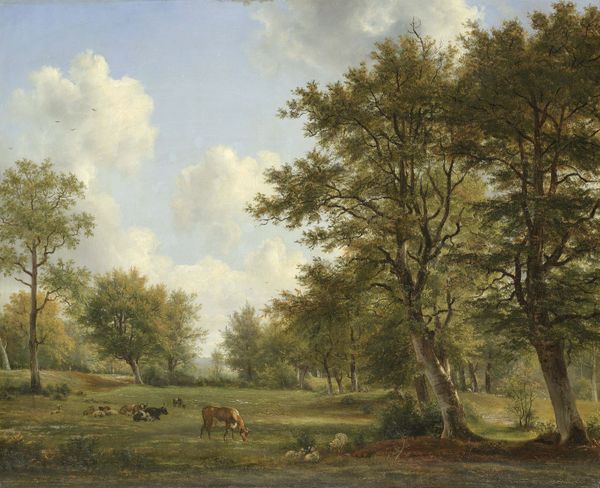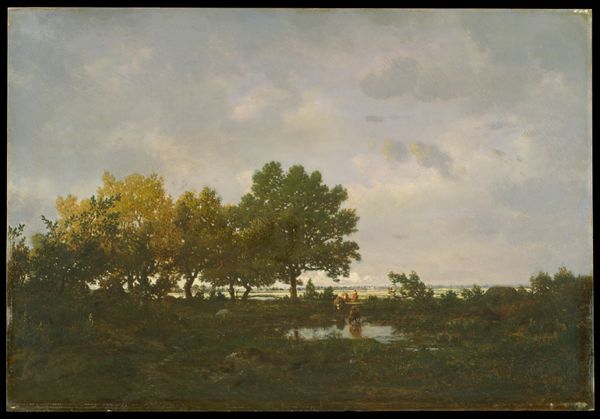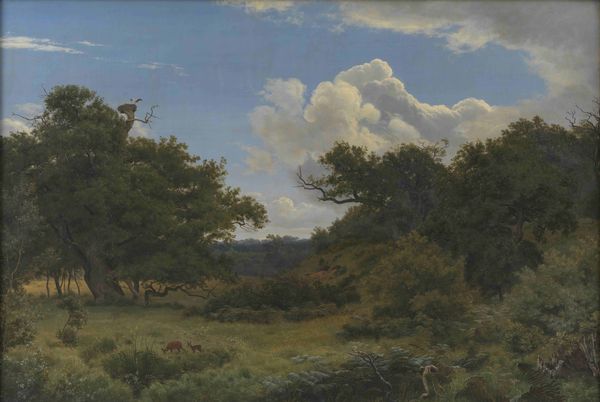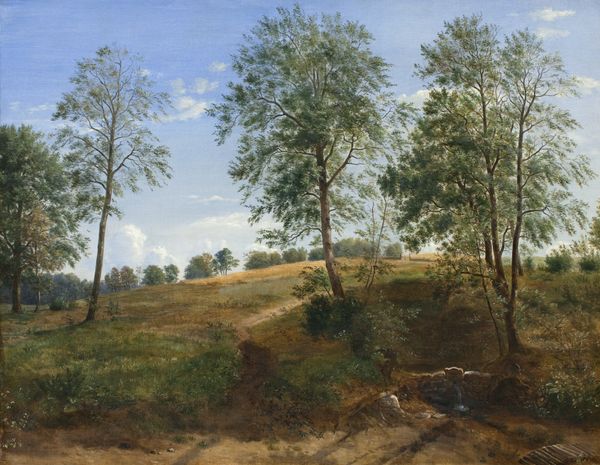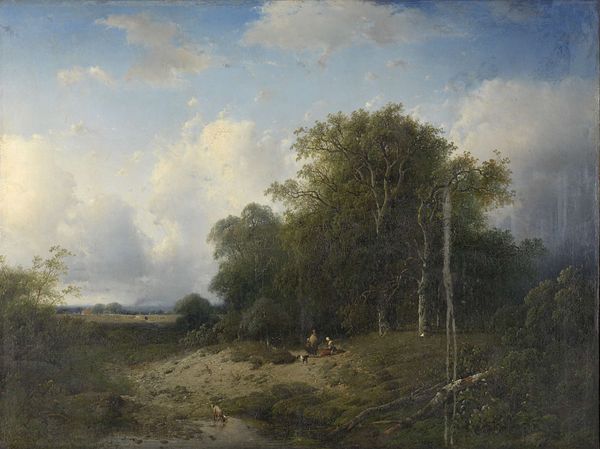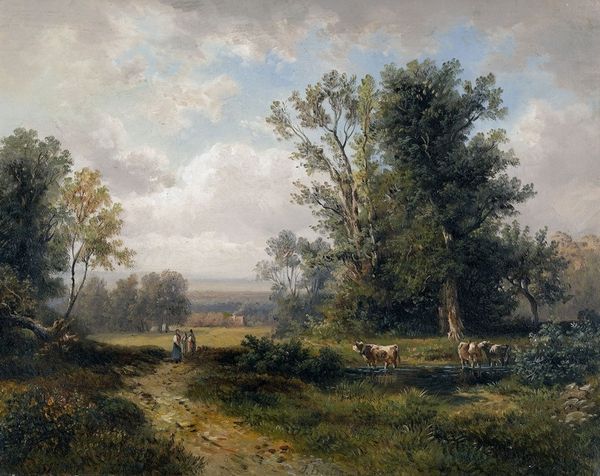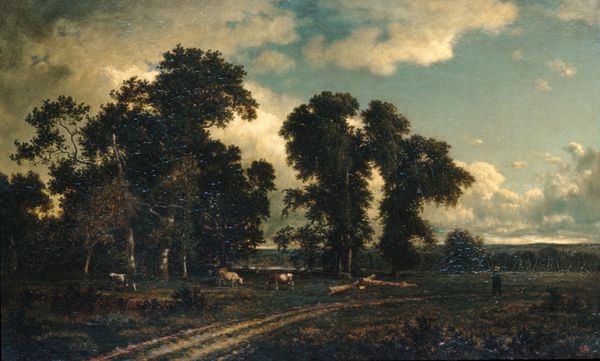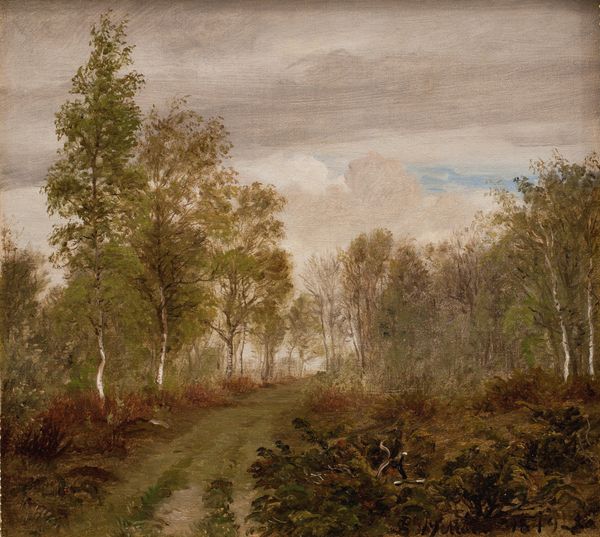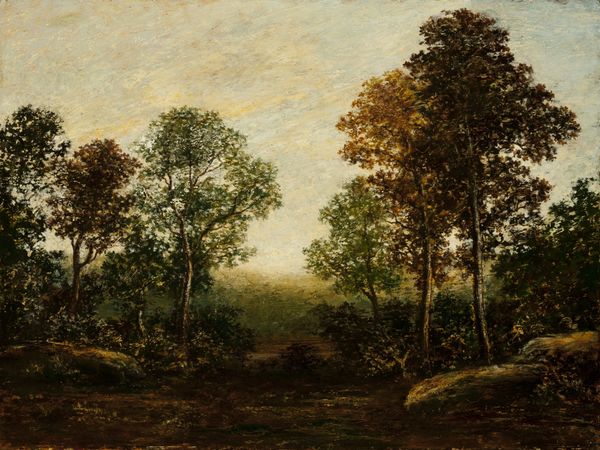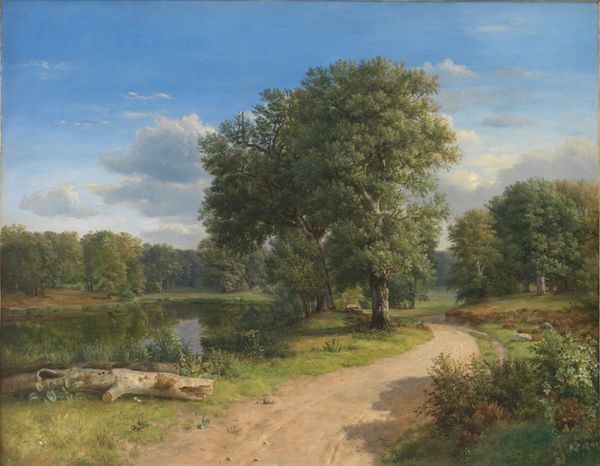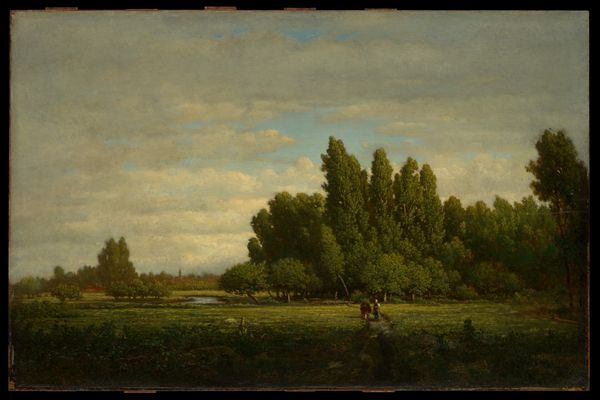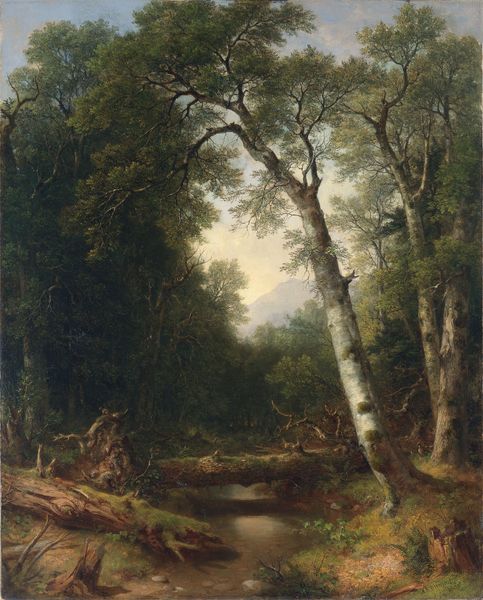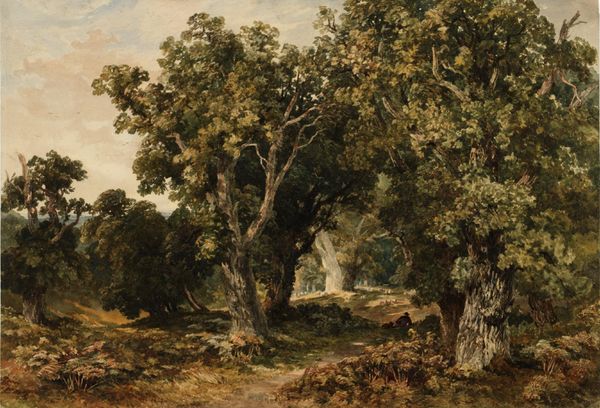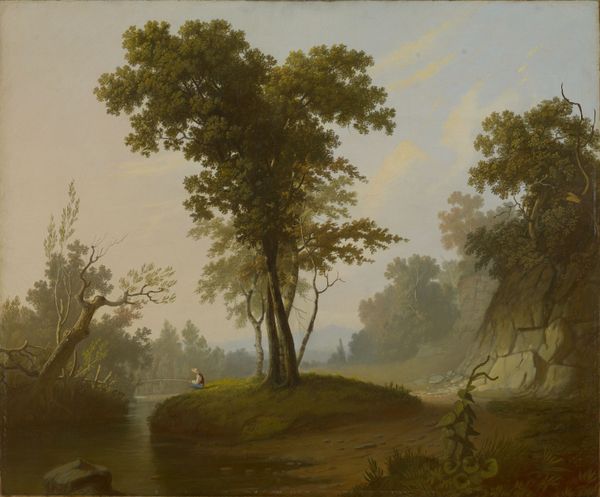
Dimensions: 42.2 × 54 cm (15 5/8 × 21 1/4 in.)
Copyright: Public Domain
Theodore Rousseau made this landscape painting, Springtime, with oil on canvas. As we contemplate this painting, it is important to remember the Barbizon School movement that took hold in France around the mid-19th century. Rousseau and his peers gathered in the village of Barbizon, responding to the rise of urbanism by turning to the nearby forest of Fontainebleau as their subject. They believed that painting directly from nature, en plein air, could offer an unmediated and authentic experience. This vision challenged the academic tradition, which privileged historical and mythological scenes painted in the studio. Rousseau's focus on the intimate details of the forest, his subdued palette and loose brushwork, all reflect this shift in artistic values. To further understand Rousseau’s contribution, one might consult exhibition catalogues, period reviews, and the artist’s correspondence. Such resources reveal how Rousseau and the Barbizon School shaped the perception of nature and the role of art in a rapidly changing world.
Comments
No comments
Be the first to comment and join the conversation on the ultimate creative platform.
